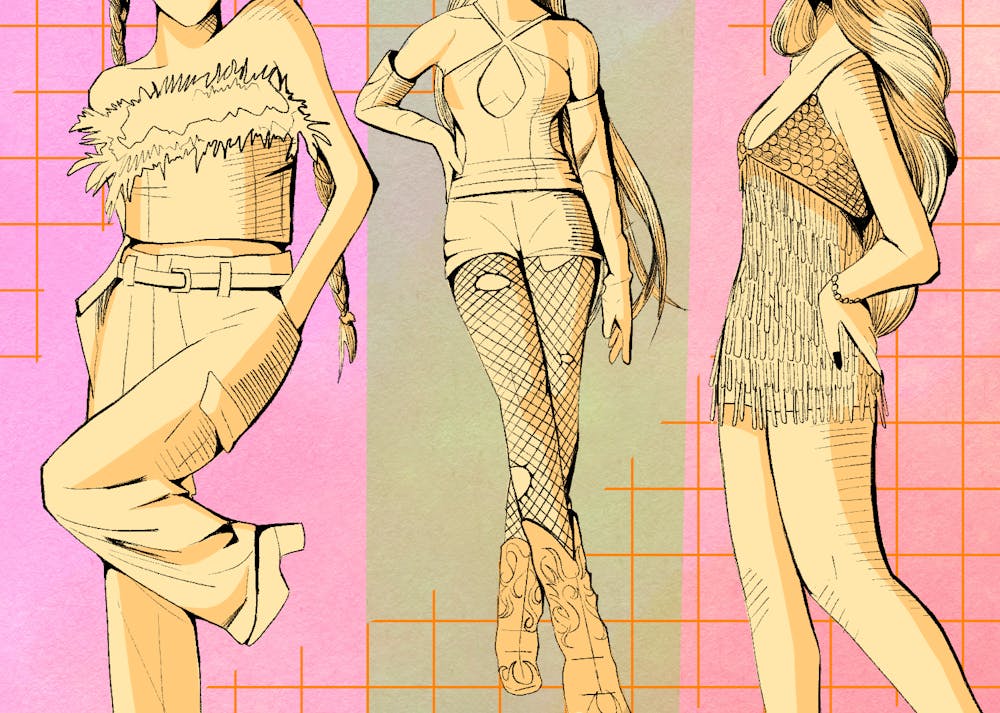Everything was there on the runway: Wings made of faux feathers and rhinestone tulle, crystal bustiers and bras; long-lasting camera shots of Adrianna Lima, Bella and Gigi Hadid bookending the show, and Ashley Graham strutting down the pink runway.
The stories about the brand's problems have been well documented with criticism of its idealization of thinness, failing to catch up to conversations around inclusivity and its past attempts at rebranding its angles to a collective. Nonetheless, people still love Victoria's Secret for its winged models and glittery outfits.
The spectacle was canceled six years ago in the wake of #MeToo and subsequent demands for inclusivity. This attempted rebrand of the Victoria's Secret fashion show has fans split on whether the intention is genuine or not.
The lingerie-giant branded underwear models as "Angels," and for the past few years, had been rebuilding its reputation of using women as a vehicle for male fantasy by reorganizing corporate structure and making countless pledges to female empowerment.
The fashion show even began with a voice-over that announced, "The women hold the reins" and "On the runway, it's all about the women." The show marketed its comeback as a space for women of all shapes, races and identities.
But was that true?
"There were a lot of white people, but I also saw color too, which I thought was decent," said Kaniece Thomas, a freshman studying fashion design. "But me personally, I feel like it might have been better if they added more diversification, not just race-wise, but size-wise."
There were more body types featured on the runway than in the past, including the first transgender model to ever walk the show, yet the event still highlighted bronzed, thin and toned models.
The inclusion of some plus-sized models like Ashley Graham was a step forward for the company, but not a complete fix. In 2018, hours before the last fashion show, former chief marketing officer Ed Razek told Vogue that transgender and plus-sized models would not be cast because the event is supposed to be a "fantasy."
"There wasn't a lot of plus-sized looks and in my honest opinion, about some of the plus-size looks, I feel like they were so blah," Thomas said.
The Angels' comeback has garnered mixed reviews from ASU students as well. Some students rave about the return of the glittery wings, bombshell blowouts and workout motivation. Others fear the potentially unrealistic expectations.
READ MORE: A new wave of anti-aging products are impacting young people
"All the women that walk that runway are absolutely beautiful, but it doesn't make everybody else less beautiful," said Paige Stanley, a freshman studying popular music. "And of course, everybody else had their own opinion and their own views, but I always love the art behind it."
Despite the controversy, many people grew up watching VS runway shows and shopping at PINK. Victoria's Secret was often considered a right of passage for women.
"Some of (the models) are unrealistic to young girls, but for me it kind of brought 'I could totally be that beautiful, let me take better care of myself,'" said LuLu Bianco, a freshman studying fashion business. "Like it's a positive thing for me. I didn't look at myself and think, 'Oh, I could never be like that.'"
As pink confetti rained down from the ceiling in the finale, this gathering of celebrities dressed in their best lingerie-inspired looks gazed on — reliving a moment that had taken on, in the haze of nostalgia, a familiar rosy pink glow as famous '90s models strutted to Cher, closing the fashion show.
Whether Victoria's Secret has truly made an inclusive comeback will be revealed as the brand pays more attention to customer feedback. But at least the show gave us Cher — and who doesn't love Cher?
Edited by Tiya Talwar, Andrew Dirst, Sophia Ramirez, Alysa Horton and Natalia Jarrett.
Reach the reporter at thutche1@asu.edu
Like The State Press on Facebook and follow @statepress on X.
Tiffany is a freshman studying fashion design in business administration. This is her second semester with The State Press.




